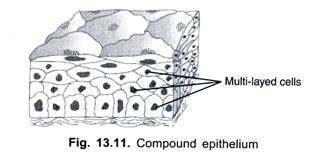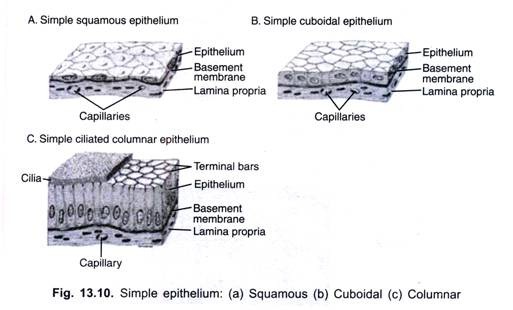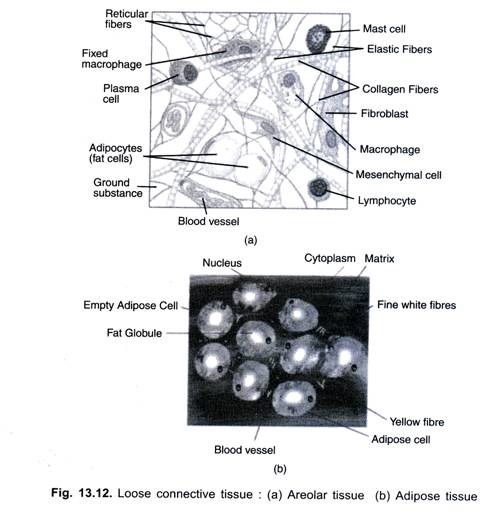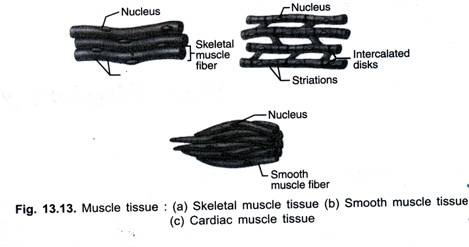Some of the major types of animal tissues are as follows: (i) Epithelial Tissue (ii) Connective Tissue (iii) Muscle Tissue.
In multicellular animals, a group of similar cells along with intercellular stances perform a specific function. Such an organization is known as tissue.
All complex animals consist of only four basic types of tissues. These tissues organized in specific proportion and pattern to form an organ like stomach, lung, heart and kidney.
The tissues are of types namely:
(i) Epithelial,
(ii) Connective,
(iii) Muscular,
(i) Epithelial Tissue:
This tissue has a free surface. It faces either a body Quid or the outside environment and thus provides a covering or a lining for some part of the body. There are two types of epithelial tissues namely simple epithelium and compound epithelium.
Simple epithelium is composed of a single layer of cells and functions as a lining for body cavities, ducts, and tubes similar to skins; the compound epithelium consists of two or more cell layers and has protective function.
These are:
(i) Squamous,
(ii) Cuboidal,
(iii) Columnar,
(iv) Columnar cells bearing cilia.
Figure 13.11 shows that compound epithelium is comprised of more than one layer of cells and thus has a limited role in secretion and absorption and they provide protection against chemical and mechanical stresses. Little intercellular material exists to hold together all cells in epithelium.
 In the epithelium and other tissues, there are three types of cell junctions. These are known as tight, adhering and gap junctions. Tight junctions facilitate to stop substances from leaking across a tissue. Adhering junctions do cementing to keep neighboring cells together. Gap junctions help the cells to communicate with each other by connecting the cytoplasm of adjoining cells. This is for rapid transfer of ions, small molecules and sometimes big molecules.
In the epithelium and other tissues, there are three types of cell junctions. These are known as tight, adhering and gap junctions. Tight junctions facilitate to stop substances from leaking across a tissue. Adhering junctions do cementing to keep neighboring cells together. Gap junctions help the cells to communicate with each other by connecting the cytoplasm of adjoining cells. This is for rapid transfer of ions, small molecules and sometimes big molecules.(ii) Connective Tissue:
Connective tissues are in abundance and are all over the body of complex animals. There are three types of connective tissues. These are loose connective tissue, dense connective tissue and specialized connective tissue. Loose connective tissue contains cells and fibers loosely arranged in a semi-fluid ground substance.
Figure 13.12 shows the areola tissue present beneath the skin. Another type of loose connective tissue is Adipose tissue. It is located mainly beneath the skin. The cells of this tissue are specialized to store fats in the body.


